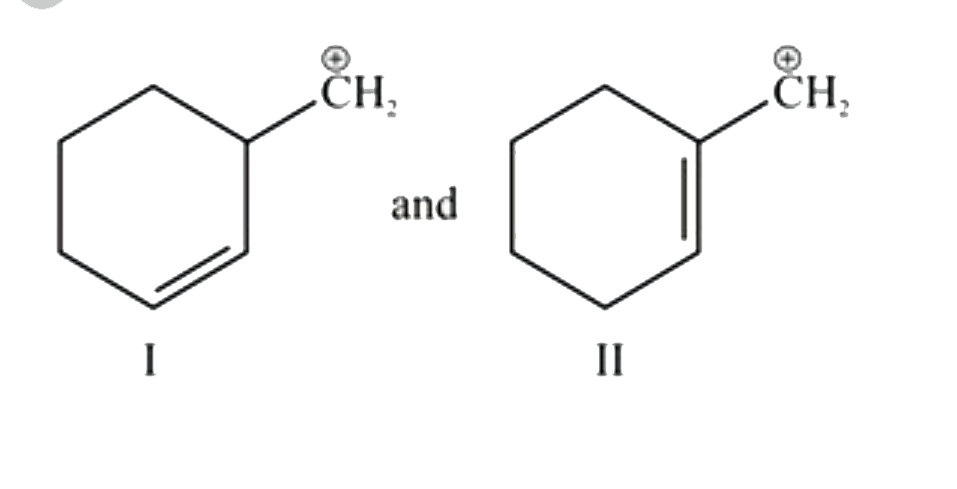In each of the following pairs of salts, which one is more stable and why ?
(i) Ferrous and ferric salts (ii) Cuprous and cupric salts.
To determine the stability of the given pairs of salts (ferrous vs. ferric salts and cuprous vs. cupric salts), we need to analyze their electronic configurations and the stability of their oxidation states.
1. Identify the oxidation states:
- Ferrous salt corresponds to Fe²⁺ (iron in +2 oxidation state).
- Ferric salt corresponds to Fe³⁺ (iron in +3 oxidation state).
2. Determine the atomic number of iron:
- The atomic number of iron (Fe) is 26.
3. Write the electronic configuration for Fe²⁺:
- The neutral iron atom has 26 electrons. For Fe²⁺, we lose 2 electrons.
- Electronic configuration: 1s² 2s² 2p⁶ 3s² 3p⁶ 3d⁶ (total of 24 electrons).
4. Write the electronic configuration for Fe³⁺:
- For Fe³⁺, we lose one more electron from Fe²⁺.
- Electronic configuration: 1s² 2s² 2p⁶ 3s² 3p⁶ 3d⁵ (total of 23 electrons).
5. Analyze the stability:
- Fe³⁺ has a half-filled 3d subshell (3d⁵), which is a stable configuration due to exchange energy and symmetry.
- Therefore, ferric salts (Fe³⁺) are more stable than ferrous salts (Fe²⁺).
(ii) Cuprous and Cupric Salts:
1. Identify the oxidation states:
- Cuprous salt corresponds to Cu⁺ (copper in +1 oxidation state).
- Cupric salt corresponds to Cu²⁺ (copper in +2 oxidation state).
2. Determine the atomic number of copper:
- The atomic number of copper (Cu) is 29.
3. Write the electronic configuration for Cu⁺:
- The neutral copper atom has 29 electrons. For Cu⁺, we lose 1 electron.
- Electronic configuration: 1s² 2s² 2p⁶ 3s² 3p⁶ 3d¹⁰ (total of 28 electrons).
4. Write the electronic configuration for Cu²⁺:
- For Cu²⁺, we lose one more electron from Cu⁺.
- Electronic configuration: 1s² 2s² 2p⁶ 3s² 3p⁶ 3d⁹ (total of 27 electrons).
5. Analyze the stability:
- Cu⁺ has a fully filled 3d subshell (3d¹⁰), which is a stable configuration.
- Therefore, cuprous salts (Cu⁺) are more stable than cupric salts (Cu²⁺).
Final Answer:
- (i) Ferric salts (Fe³⁺) are more stable than ferrous salts (Fe²⁺) due to the stability of the half-filled 3d subshell.
- (ii) Cuprous salts (Cu⁺) are more stable than cupric salts (Cu²⁺) due to the stability of the fully filled 3d subshell.
- Ferrous salt corresponds to Fe²⁺ (iron in +2 oxidation state).
- Ferric salt corresponds to Fe³⁺ (iron in +3 oxidation state).
- The atomic number of iron (Fe) is 26.
- The neutral iron atom has 26 electrons. For Fe²⁺, we lose 2 electrons.
- Electronic configuration: 1s² 2s² 2p⁶ 3s² 3p⁶ 3d⁶ (total of 24 electrons).
- For Fe³⁺, we lose one more electron from Fe²⁺.
- Electronic configuration: 1s² 2s² 2p⁶ 3s² 3p⁶ 3d⁵ (total of 23 electrons).
- Fe³⁺ has a half-filled 3d subshell (3d⁵), which is a stable configuration due to exchange energy and symmetry.
- Therefore, ferric salts (Fe³⁺) are more stable than ferrous salts (Fe²⁺).
- Cuprous salt corresponds to Cu⁺ (copper in +1 oxidation state).
- Cupric salt corresponds to Cu²⁺ (copper in +2 oxidation state).
- The atomic number of copper (Cu) is 29.
- The neutral copper atom has 29 electrons. For Cu⁺, we lose 1 electron.
- Electronic configuration: 1s² 2s² 2p⁶ 3s² 3p⁶ 3d¹⁰ (total of 28 electrons).
- For Cu²⁺, we lose one more electron from Cu⁺.
- Electronic configuration: 1s² 2s² 2p⁶ 3s² 3p⁶ 3d⁹ (total of 27 electrons).
- Cu⁺ has a fully filled 3d subshell (3d¹⁰), which is a stable configuration.
- Therefore, cuprous salts (Cu⁺) are more stable than cupric salts (Cu²⁺).
- (i) Ferric salts (Fe³⁺) are more stable than ferrous salts (Fe²⁺) due to the stability of the half-filled 3d subshell.
- (ii) Cuprous salts (Cu⁺) are more stable than cupric salts (Cu²⁺) due to the stability of the fully filled 3d subshell.
Topper's Solved these Questions
- BOOK - PRADEEPCHAPTER - STRUCTURE OF ATOMEXERCISE - Analytical Questions And Problems with Answers/solutions (Problems)18videos
STRUCTURE OF ATOM
- BOOK - PRADEEPCHAPTER - STRUCTURE OF ATOMEXERCISE - Competition Focus (JEE (Main and Advanced)/Medical Entrance (I. Multiple Choice Question) With one correct Answer92videos
STRUCTURE OF ATOM
- BOOK - PRADEEPCHAPTER - STRUCTURE OF ATOMEXERCISE - Additional Questions (Long Answer Questions)16videos
STRUCTURE OF ATOM
- BOOK - PRADEEPCHAPTER - STATES OF MATTER: SOLID MATTEREXERCISE - COMPETITION FOCUS (ASSERTION-REASON)17videos
STATES OF MATTER: SOLID MATTER
- BOOK - PRADEEPCHAPTER - THERMODYNAMICSEXERCISE - MULTIPLE CHOICE QUESTION ( BASED ON PRACTICAL CHEMISTRY)3videos
THERMODYNAMICS
Similar Questions
Knowledge Check
- Question 1 - Select One
In each of the following pairs of ions in which I ion is more stable than II
AC6H5−⊕CH2IandCH2=CH−⊕CH2IIBCH2I=⊕CHandCH3II−⊕CH2C DCH3−CH−CH3 |CH3−C⊕−CH3IandCH3−N−CH3 |CH3−C⊕−CH3II
DCH3−CH−CH3 |CH3−C⊕−CH3IandCH3−N−CH3 |CH3−C⊕−CH3II - Question 2 - Select One
Which one is a mixed salt
ANaHSO4BNaKSO4CK4Fe(CN)6DMg(OH)Cl - Question 3 - Select One
Which ones are bile salts?
AHaemoglobin and biliverdinBBilirubin and biliverdinCBilirubin and haemoglobinDSodium glycolate and taurocholate

